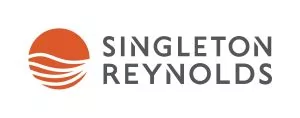- with readers working within the Insurance and Property industries
The Ultimate Issue Rule, the common law principle which prohibited litigants from leading opinion evidence on the ultimate issue before the court, has long since been relaxed. Nevertheless, recent case law suggests that the rule may be regaining some of its former potency.
In R. v. Prasad, 2024 ONCA 601, the Court of Appeal for Ontario described "the trial process, with its allocation of responsibilities" as "primordial", and stated unequivocally, that the role of the trier of fact "must never be usurped by another".1 Similarly, in Hosseini v College of Dental Surgeons of Saskatchewan, 2022 SKQB 13, a professional negligence case, the Court of Queen's Bench for Saskatchewan made clear that the "contention that the ultimate issue rule is 'dead' overstates the change that has occurred".2
Below, we review the current legal approach to the Ultimate Issue Rule in Canada and consider its implications for legal counsel.
The Evolution of the Ultimate Issue Rule
Historically, the Ultimate Issue Rule prohibited an expert witness from giving opinion evidence on the core point or issue to be decided by the Court. The rule addressed concerns that expert evidence, "submitted through a witness of impressive antecedents", might be assigned more weight than it deserved, causing the decision-maker to improperly surrender its fact finding function.3
However, even before the Ultimate Issue Rule was abolished, it was not strictly applied.4 Critics found the rule to be misconceived and impracticable. Wigmore contended that the witness, "in expressing his opinion, is not attempting to 'usurp' the jury's function; nor could if he desired", and further, that the rule strictly applied would "invariably [...] exclude the most necessary testimony".5
The Supreme Court eventually relaxed the rule – first, in Graat v. R, [1982] 2 SCR 819 for lay witnesses, and then in R v. Mohan, [1994] 2 SCR 9, for expert witnesses. Justice McLachlin, writing in R v Burns, [1994] 1 SCR 656 stated, "it has long been accepted that expert evidence on matters of fact should not be excluded simply because it suggests answers to issues which are at the core of the dispute before the court".6
Nevertheless, since about 2000, there has been a trend toward narrowing the scope of admissible expert evidence, including evidence approaching an ultimate issue. Thus, in R. v. D.D., [2000] 2 SCR 275, the Supreme Court described the risk that the jury's function might be usurped by that of an expert witness as being "[t]he primary danger arising from the admission of any opinion evidence".7 Likewise, the Supreme Court in R. v. Sekhon, 2014 SCC 15, addressing "the possibility that experts may usurp the role of the trier of fact" cautioned "all trial judges" of their duty to "be vigilant in monitoring and enforcing the proper scope of expert evidence".8
The current state of the Ultimate Issue Rule is explained in Crawford v. Nazif, 2019 BCSC 2336, a medical negligence case. The Court confirmed that "[t]here is no longer a general rule barring opinion evidence on the ultimate issue before the Court".9 Instead, expert evidence pertaining to the ultimate issue is now addressed through the general two-step framework relating to the admissibility of expert evidence.10 Specifically, "the degree to which an opinion relates to the ultimate issue" is now a factor to be considered in determining whether the evidence is necessary and relevant.11 Moreover, these criteria are applied more strictly to evidence approaching an ultimate issue.12
Notably, in Crawford, the Court resolved the issue by redacting the offending portions of the expert report.13 However, a Court may also address evidence on the ultimate issue by appropriately instructing the jury or by excluding the testimony altogether.14
In 2024, the Court of Appeal for Ontario also considered the issue in R v. Prasad, 2024 ONCA 601. In Prasad, the Court explained that concerns that an expert might usurp the role of the trier of fact are now captured within the 'necessity' criterion.15 When considering "whether the expert evidence is needed to enable the trier of fact to perform its fact-finding function properly and accurately", a Court should ask whether the expert evidence "express[es] an opinion on the very question that the trier of fact must answer?"16
The Ultimate Issue Rule and Solicitor Negligence Claims
Expert evidence regarding the standard of care is frequently required in professional negligence cases, including solicitor negligence cases. Unsurprisingly, issues relating to the Ultimate Issue Rule occasionally arise.
In Blizzard Uranium Corp. v Nathanson, Schachter & Thompson LLP, 2024 BCSC 2197, the Court affirmed that it is "improper for an expert to usurp the function of the court in a negligence case by opining that a party has breached the duty of care".17 The Court refused to admit evidence which it described as being "framed exactly as a final judgment" despite conceding that the expert's opinion would be helpful.18 Moreover, although the plaintiff requested that only the offending portions of the penultimate paragraph be redacted, the Court found it necessary, "in the interests of trial efficiency and fairness", to strike out the paragraph in its entirety.19 The remaining unoffending paragraphs of the report were admitted.
Similarly, in Shortreed Joint Venture Ltd. v Guvi, 2024 BCSC 1610, the Court acknowledged that "expert opinions are not refused admission in trials simply because they address the ultimate issue" but nevertheless refused to admit an expert report it described as "argument disguised as opinion" and "opinion on the ultimate issue".20 The Court stated that the expert, "continually made findings of fact and findings of law that went beyond his instructions and gratuitously answered several questions that the court must deal with after hearing all of the evidence."21 For example, the Court found that the expert's conclusion that "good and proper practices would likely have avoided the nasty result" intruded upon the role of the trial judge and failed to offer any helpful insight as to "the standard of a reasonably competent and diligent lawyer" that went beyond the judge's own knowledge.22 Consequently, applying Mohan, the Court found that the expert's evidence was unnecessary and prejudicial, and therefore failed to meet the threshold requirements for admissibility.23
Key Takeaways
With the demise of the Ultimate Issue Rule, expert evidence on the issue to be decided by the Court is no longer automatically barred. Nevertheless, the rule is far from "dead". Rather, under the current legal approach, evidence on the ultimate issue is linked to the criterion of necessity and addressed at the threshold stage of the test for admissibility. The closer expert opinion comes to the ultimate issue, the more strictly the criteria of necessity is to be applied.
In solicitor negligence cases, where expert evidence on the standard of care is generally necessary, the Courts have been willing to exclude opinion evidence which threatens to usurp the function of the Court.
Litigation counsel must be cautious to avoid submitting expert opinion which threatens to usurp the function of the Court. Running afoul of the Ultimate Issue Rule is often "just a matter of sensitivity over the way in which the expert gives his or her evidence".24 Counsel should keep this in mind.
Footnotes
1. R. v. Prasad, 2024 ONCA 601 at para 36.
2. Hosseini v College of Dental Surgeons of Saskatchewan, 2022 SKQB 13 at para 158.
3. R. v. Mohan, [1994] 2 SCR 9 at page 21.
4. S.N. Lederman, A.W. Bryant and M.K. Fuerst, Sopinka, Lederman & Bryant: The Law of Evidence in Canada, 6th ed. (Toronto: LexisNexis Canada, 2022) at §12.178.
5. Graat v. The Queen, [1982] 2 SCR 819 at pages 833-834.
6. R. v. Burns, [1994] 1 SCR 656 at page 666.
7. R. v. D.D., [2000] 2 SCR 275 at para 53.
8. R. v. Sekhon, 2014 SCC 15 at para 46.
9. Crawford v Nazif, 2019 BCSC 2336 at para 38.
10. The first step requires a consideration of the four threshold factors that are set out in Mohan. Those factors are relevance, necessity, the absence of an exclusionary rule, and the need for the expert to be properly qualified. The second step is a discretionary gatekeeping step where a judge balances the potential risks and benefits of admitting the evidence in order to decide whether the potential benefits of the evidence justify the risks.
11. Crawford v Nazif, 2019 BCSC 2336 at para 40.
12. Ibid at para 39.
13. Ibid at para 45-46.
14. S.N. Lederman, A.W. Bryant and M.K. Fuerst, Sopinka, Lederman & Bryant: The Law of Evidence in Canada, 6th ed. (Toronto: LexisNexis Canada, 2022) at §12.192.
15. R. v. Prasad, 2024 ONCA 601 at para 30, 51.
17. Blizzard Uranium Corp. v Nathanson, Schachter & Thompson LLP, 2024 BCSC 2197 at para 44.
18. Ibid at para 46.
19. Ibid at para 48.
20. Shortreed Joint Venture Ltd. v Guvi, 2024 BCSC 1610 at paras 145 and 154.
21. Ibid at para 164.
22. Ibid at para 155.
23. Ibid at para 160.
24. S.N. Lederman, A.W. Bryant and M.K. Fuerst, Sopinka, Lederman & Bryant: The Law of Evidence in Canada, 6th ed. (Toronto: LexisNexis Canada, 2022) at §12.189.
The content of this article is intended to provide a general guide to the subject matter. Specialist advice should be sought about your specific circumstances.



